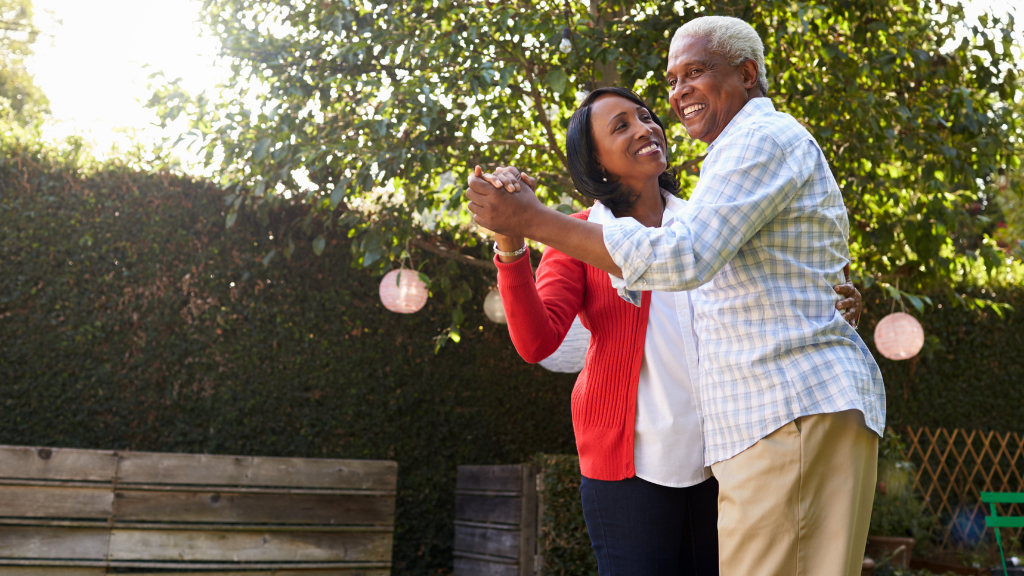5 Care Partner Tips for Managing Mid-Stride Parkinson’s Symptoms

In the first few years of treatment following a diagnosis, your loved one’s Parkinson’s disease (PD) symptoms probably improved. Medications most likely helped your loved one go about their life, continue their hobbies and social activities as they did before PD. They may have even experienced near complete control of symptoms with minimal side effects.
Parkinson’s, however, is a progressive disease. After several years of taking levodopa, many people with Parkinson’s notice that controlling symptoms becomes more difficult. This stage of Parkinson’s disease is known as mid-stride, where new symptoms may begin to emerge at any time and can require treatment modifications. Although these changes bring adjustments to how PD is managed, your loved one can still experience good to great quality of life with your support.
Here are five tips for navigating Parkinson’s mid-stride as a care partner:
1. Manage medications.
As Parkinson’s progresses, levodopa stays effective for shorter periods of time. When levodopa begins to lose its effect, your loved one may have periods in which symptoms are much more noticeable and movement becomes more difficult. Known as “off” time, these motor fluctuations often result in the need for more frequent doses of medication.
Download our Medications and Schedule worksheet to keep an updated list of medications and dosage information. You may also want to set regular timers on your phone or tablet to remember when it’s time for the next dose.
2. Encourage exercise.
Because of how Parkinson’s impacts movement, it is natural to move less as the disease progresses. However, exercise is still essential for people in the mid-stride stage of PD. Findings from the Parkinson’s Foundation Parkinson’s Outcomes Project show that increasing physical activity to at least 2.5 hours a week may help manage Parkinson’s symptoms.
Encourage your loved one to stay active. Help them sign up for exercise classes that benefit people with PD, like Tai Chi, yoga or boxing. Our Fitness Friday series also offers at-home workouts that feature a different focus every week. Find a PD-tailored exercise class near you at Parkinson.org/InYourArea.

3. Stay social.
As symptoms progress, it is common for people with Parkinson’s to socialize less often. Sometimes the person with Parkinson’s and care partner isolate, withdrawing gradually from participation in the community and prior social life.
Finding a comfortable environment to share your thoughts and feelings about PD can make a big difference. Join a support group in your area to connect with local members of the PD community. In addition to groups for people living with Parkinson’s, there are also support groups available for care partners. Visit our Chapter pages or contact our Helpline at 1-800-4PD-INFO (1-800-473-4636) for help finding a support group.
4. Work alongside the care team.
Keeping in touch with your loved one’s PD care team is especially important throughout the mid-stride stage of Parkinson’s, as symptoms may begin to progress during this time.
Our Global Care Network is widely recognized as the best-in-class treatment centers for Parkinson's. These designated centers offer team-based, interdisciplinary treatment and care to people with Parkinson’s. Find expert care near you.
5. Take time for yourself.
Remember that after several years of caring for someone with Parkinson’s, experiencing some degree of care partner burnout is normal. Addressing these feelings as they appear is important, before they result in compassion fatigue.
Make time outside of your caregiving duties for yourself. Whether reading a book, going for a run or painting, working self-care into your care partner routine can help you keep yourself and your loved one healthy.
For more tips on how to manage Parkinson’s mid-stride, download or order our book, Managing Parkinson's Mid-Stride
Related Blog Posts

From Fear to Care: How to Address Parkinson’s Hospital Risks

PD GENEration: Advancing Research, Empowering Lives
